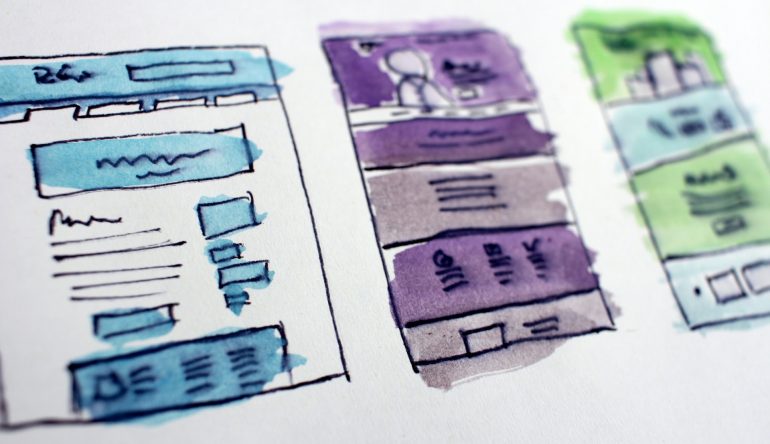
User experience, also known as UX, revolves around a person’s experience that they have when they interact with a brand and their services and products.
It encompasses both physical and online customer-brand interactions and plays a significant role in brand and trust-building, customer loyalty, sales, and turning visitors into customers.
Have you even walked into a store, but it was too cramped and messy and you couldn’t find what you were looking for? This is a great example of poor user experience and can luckily be easily fixed.
When it comes to websites, creating a good user experience can be a little more complex and challenging, which is why we decided to write this post.
Today, we’ll speak about all things related to improving the user experience for websites and provide you with resources that will hopefully help you improve the user experience of your own website.
Let’s begin.
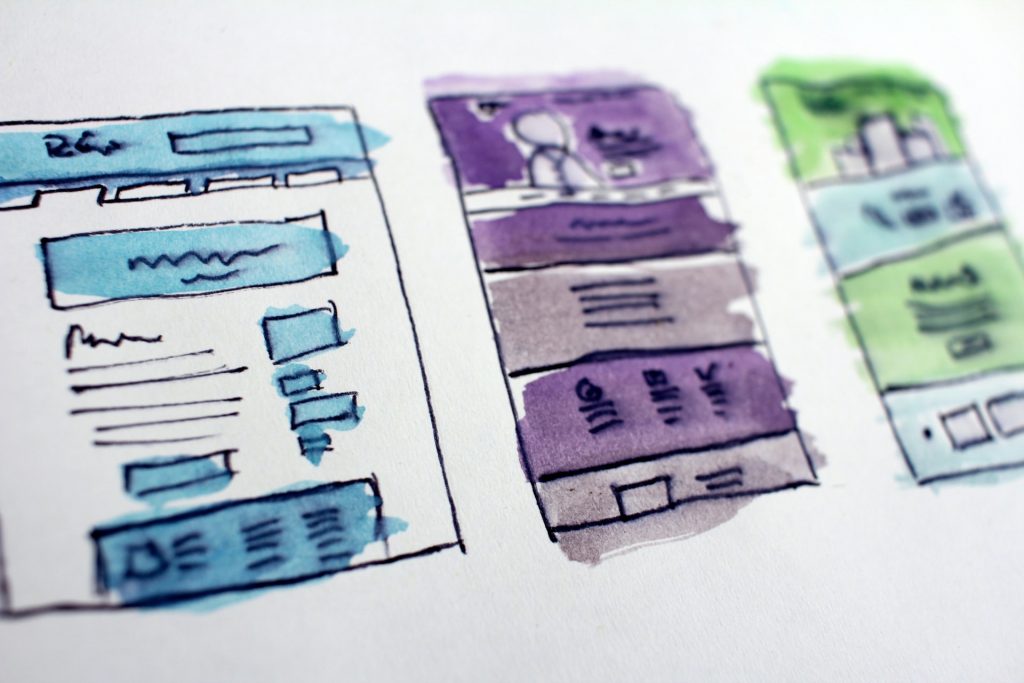
1. What does user experience entail?
Before we start talking about improving user experience, let’s look at this term in more detail.
As previously mentioned, user experience is all about how someone feels after they have interacted with an aspect of a brand, be it their store, customer service, product, or website.
In order to ensure good user experience, UX designers need to be familiar with a number of disciplines. They include psychology (they need to know how the user thinks), design (in order to provide a smooth experience), and technology (they are helping create websites, after all).

The term was coined by Don Norman, a cognitive scientist who came up with the term while he was working for Apple. In an article he co-wrote with Jakob Nielsen, he described user experience as follows:
“The first requirement for exemplary user experience is to meet the exact needs of the customer, without fuss or bother. Next come simplicity and elegance that produce products that are a joy to own, a joy to use. True user experience goes far beyond giving customers what they say they want or providing checklist features. In order to achieve high-quality user experience in a company’s offerings there must be a seamless merging of the services of multiple disciplines, including engineering, marketing, graphical and industrial design, and interface design.”
It is clear that the term user experience is complex and that it involves a number of other disciplines, but don’t let this discourage you from becoming a UX expert.
In the following paragraphs, we will provide you with some useful resources that will help you on your UX learning journey.
2. Useful articles about user experience

If you’re just starting off with learning user experience, I’d recommend checking out this article: Basic terms that every UX designer should know!
If you’re looking for something more in-depth, check out this article from Smashing Magazine, which covers both definitions and a more technical side, that can greatly help with website usability and UX improvements.
”How to UX your website in 6 steps” is a short and useful read that can help a ton with improving user experience. A similar and just as useful post ”10 Tips That Can Drastically Improve Your Website’s User Experience” can be of great help, as well, so I’d definitely recommend checking it out.
This article provides essential information about user experience, but has also a list of skills a UX designer should possess, as well as examples of websites that have great user experiences.

Speaking of examples, check out this awesome post from Career Foundry, where Sean Beaubien provides the readers with examples of websites with great UX and tells them why they’re good.
We’ve written numerous articles on user experience in the past that you might find useful, as well. Here’s an article about color schemes, because finding the right one is crucial when it comes both to good website design and good user experience. This article is all about how to use images on websites, while this one is about color luminance.
We’ve also written posts about other topics, including shadows and blurs in web design, followed by an article on the 4 main types of fonts and their uses with examples, and even rules of typography. Feel free to check out our blog for more.
Mockplus has a great article on user experience that contains elements of a good UX design and even a list of principles you should follow.
If you’re interested in more, the following paragraph will provide you with entire websites that are focused on UX. They have hundreds of useful articles when it comes to website usability and UX improvements.
3. Websites that will help you learn more about improving user experience

The website of the Nielsen Normal Group is small archive. It has dozens of articles on UX, but also other topics and how they come into play when it comes to designing and improving user experience.
The topics range from app design, branding and eCommerce all the way to psychology and user experience. Aside from this, they also offer training, hold multiple conferences during the year and even have online seminars.
Related: Bad UX examples!
The UX Design is a website that curates stories on UX, visual and product design. Here, you will find a ton of useful and often entertaining articles, most of which you can’t help but click because the titles are so interesting and intriguing. But don’t forget to use their search bar and find articles related to UX. Most of them are about website usability, which is great.

There is also UX Planet, a website for only user experience related articles. Here, you will find articles about website usability, mobile app UX, different approaches, rules, UX improvements and principles that can help with the process of improving user experience on your website. They even have a special tab for UX for beginners, if you’re just starting off with learning user experience.
UX Matters is another great website for all things UX. It has a list of their top 25 most popular articles according to Google Analytics. The topics tab is just as useful, and contains different topics related to UX. Make sure to check out the topic ‘experiences’, which contains information on different types of user and customer experiences.
The ever so useful Moz has a user experience category of articles that is definitely worth checking out, as well.
4. Books on user experience

Norman’s ”The Design of Everyday Things” was first published over 30 years ago, but remains relevant even today. Despite being focused on product design, it is great if you’re a UX beginner and want to learn about usability and good and bad design.
”UX for Beginners: A Crash Course in 100 Short Lessons” by Joel Marsh is great for beginners, as well (it also has a ton of humor). It will help you learn about the basics of UX, what wireframes are and how to make them, how to design layouts and use different elements, and many more.
There’s also ”Universal Principles of Design” by Willian Lidwell and Kritina Holden. This super useful book that teaches the reader about enhancing usability and improving user experience. It is rich with examples and illustrations, and most importantly, tips.
If you want to learn more about the user, Susan Weinschenk’s ”100 Things Every Designer Needs to Know About People”. This book that will help you make designs that people will like. It covers a variety of topics and will help you make better design choices when it comes to apps, websites, print and product design.

Chris Nodder’s ”Evil by Design: Interaction Design to Lead Us into Temptation” is a unique turn on a design book (the author organized it by the seven deadly sins). It teaches the reader about how brands use psychology, marketing and design concepts to convince people to purchase their services and products.
”The UX Book: Process and Guidelines for Ensuring a Quality User Experience” by Pardha Pyla and Rex Hartson is another great read that can definitely help with improving user experience.
Steve Krug’s ”Don’t Make Me Think” is another popular book when it comes to user experience, and dozens of designers recommend it because it is both fun to read and informative.
If you’re interested in more, check out the UX books list on Goodreads. There’s also the user experience and usability category on Amazon.
5. YouTube videos about user experience
The Nielsen Norman Group also has a YouTube channel, which has a ton of useful videos. They’re short, easy to follow, and even have closed captions. If you go to their playlists, you will find one entirely focused on user experience and website usability.
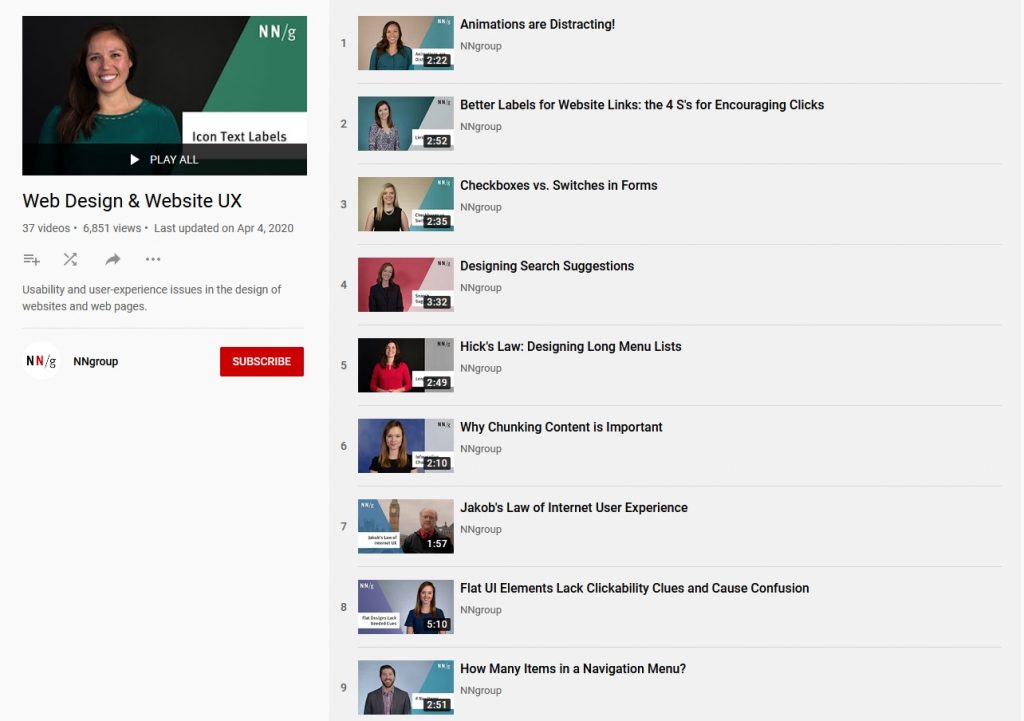
The channel The Futur has a great playlist of videos for both beginners and user experience connoisseurs that you can check out here.
The channel Bring Your Own Laptop started making a UX design course playlist years ago. It never got completed, but there are still 14 short videos that can be of help. Click here to give it a look.
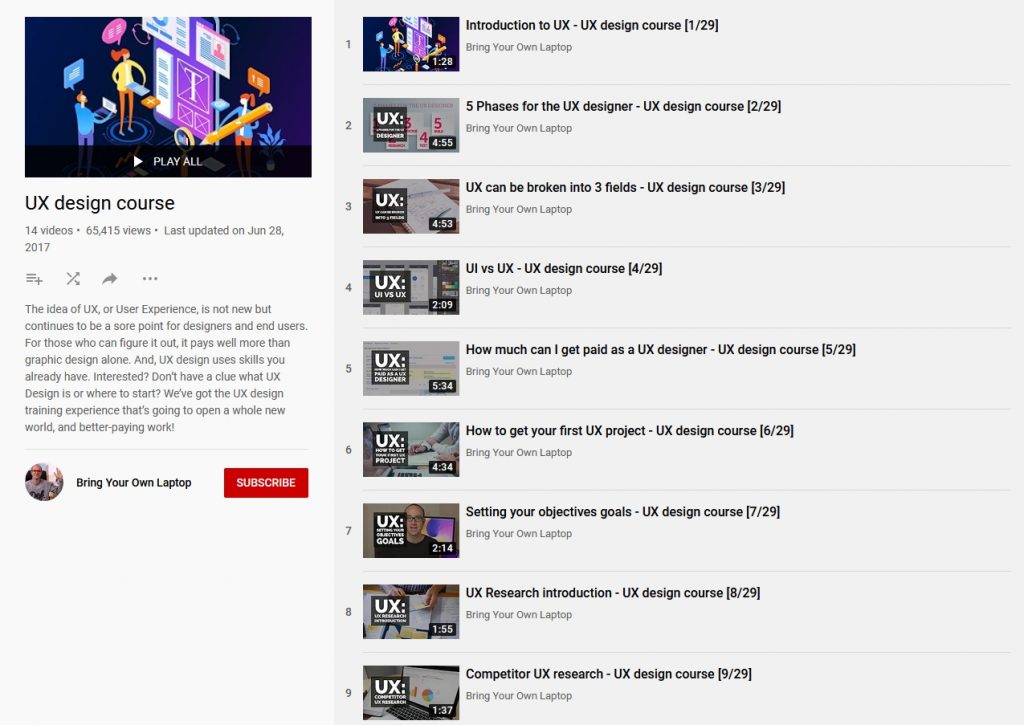
Career Foundry also has a YouTube channel, which we definitely recommend if you’re a beginner. If you go into their playlists, you will find multiple ones about UX, including the useful the ‘Learn UX Design’ playlist.

AJ&Smart is a product design and innovation studio that uploads weekly videos, and sometimes they’re about user experience, website usability, and UX improvements. Check out their playlist about all things UX here.
The channel UX Mastery isn’t as active, but they do have a series of user experience related videos that you can look at here.

Now that the YouTube UX materials are out of the way, it’s time to move on to case studies about website usability and UX improvements.
6. Helpful case studies that can help with improving user experience
Case studies present some of the most useful resources when it comes to learning more about web design. Thankfully, they don’t fail us when it comes to improving user experience, either.
We’ve spoken about their significance quite a few times in the past, so I will keep this short. They are useful because they give us insight into how developers and digital agencies solve web related problems for companies.
They are highly detailed and describe the entire problem solving process, telling us what changes the developer made and how it affected their employer afterwards.
So, if you want to learn more about how UX developers increase website usability and make UX improvements, case studies are definitely worth checking out.
Aforementioned UX collective has a collection of case studies that you can check out here. Be warned, though, all of them are interesting and you might end up spending quite some time reading them.
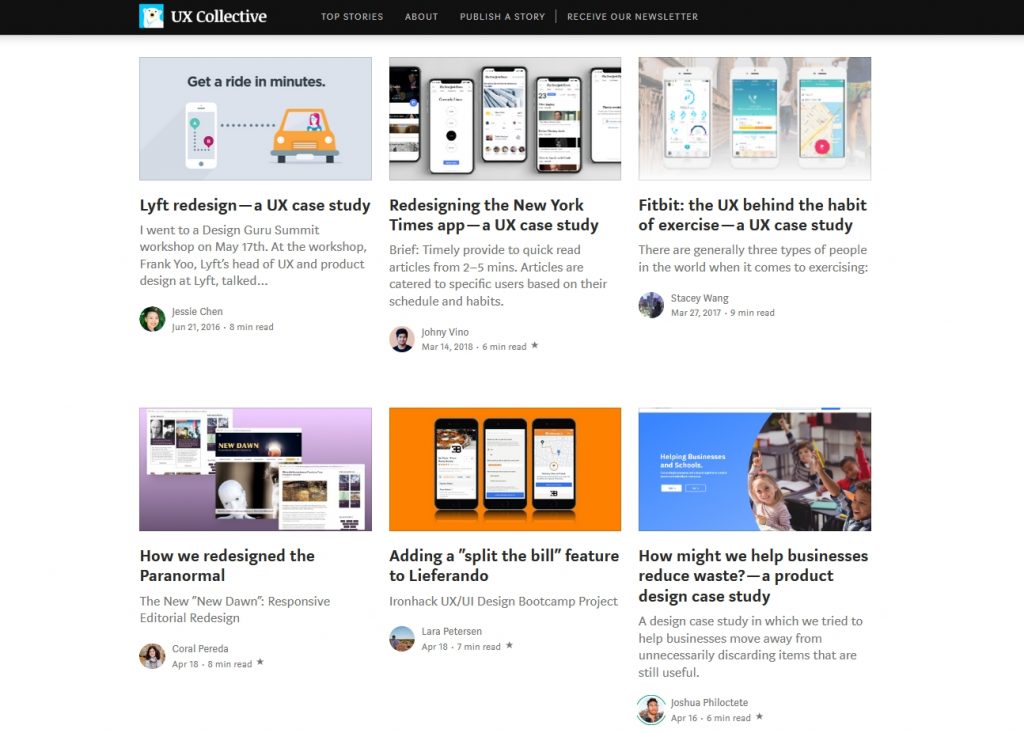
Here’s a great article on Muzli that features 10 user experience case studies that involve both apps and websites. They contain a ton of information on user experience, as well as user interface. You can find a similar article here, and the examples they provided are presented quite nicely.
The Case Study Club has a whole category only for UX design case studies that you can visit here. Career Foundry also has an article about great website usability and UX improvement case studies. It is very nicely structured, and the author provides key takeaways from each case study. Click here to check it out.
7. User experience focused social media profiles
There are numerous social media profiles that you can follow that will provide you with tips and inspiration related to website usability and UX improvements. Here are some of them.
Maybe the most famous one is uidesignpatterns, and it features posts about UX/UI humor (not their strongest suit, I will admit) and more importantly, work from UX and UI designers that can inspire you.
A similar account is UX trends, saying that their goal is to inspire you very day. They don’t post videos like the previous account I mentioned, but their account is more serious and completely meme-free. Here’s one of their posts:
Twohabitsdesign is another similar account and we definitely recommend checking it out. Some of their posts even offer more information about the designs, unlike the two previous examples.
Other similar accounts worth checking out are welovewebdesign, mixwebdesign, and uxbrainy.
Desircle is an account unlike these – rather than providing inspiration, it provides designers with tips in the form of carousel posts.
Another useful account for tips is bydanromero. This product designer makes carousel posts with tips:
Ux_ui_wireframes and humble_ux are two amazing Instagram accounts that post wireframes, which can be just as inspiring as websites. We definitely recommend giving them a follow.
Finishing up
User experience is important, if not the most important part of branding and marketing. If customers have a poor user experience while interacting with a brand, chances are, they are never coming back. Just like in real life, if the customer feels lost and confused by a brand’s shop page or website, this will negatively influence their opinion of the brand.
This is why user experience matters, especially in web design.
Whether you’re starting to learn UX as a hobby or you created your own website and want to make the user experience better, we hope that this collection of resources helps you even a little.
Thank you for reading and good luck!
If you want to hire a UX specialist

